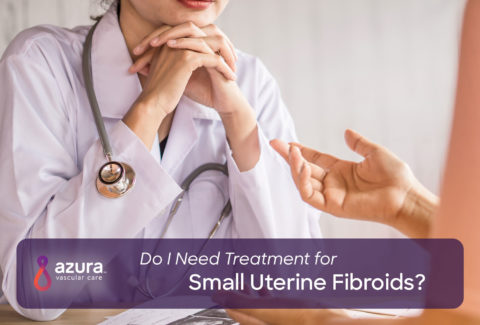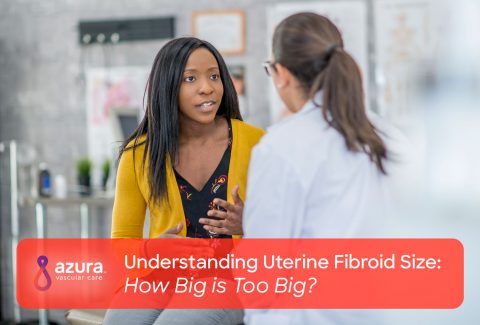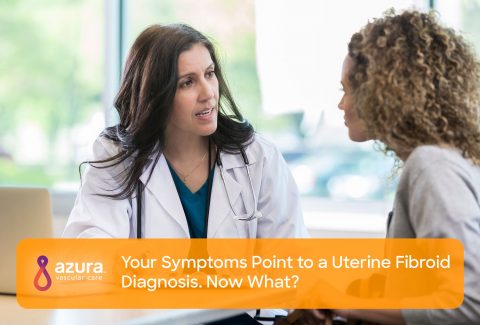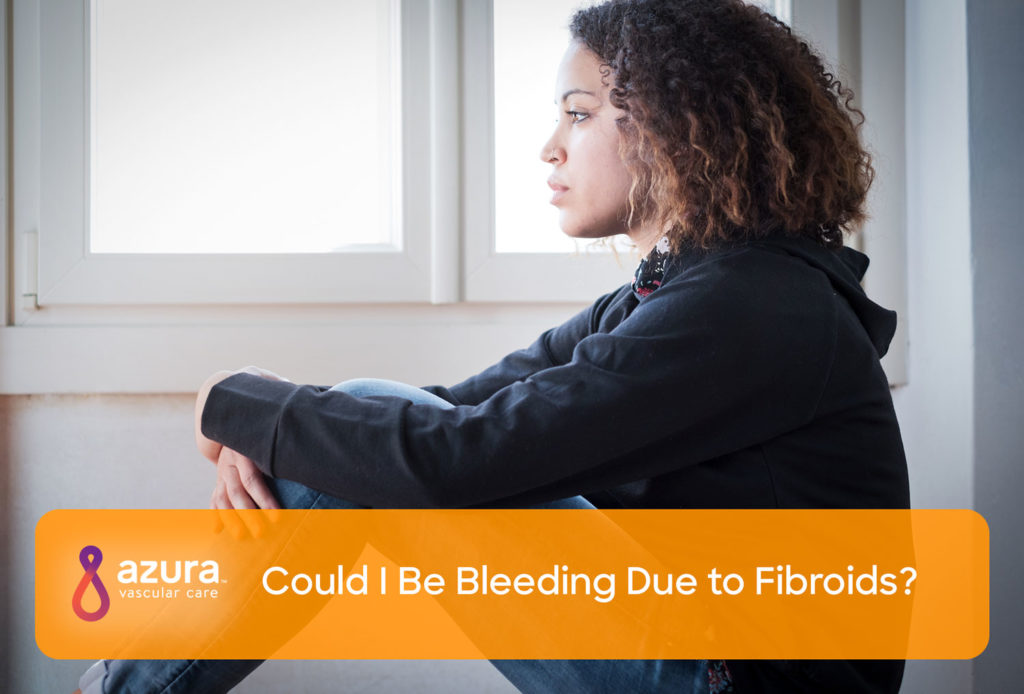
While it may be scary, abnormal bleeding is a common gynecologic condition. However, if you are bleeding due to fibroids, the inconvenience may be overwhelming.
Vaginal bleeding is considered to be abnormal if it occurs: (i)
- Between periods (including spotting)
- After sex
- During menstruation but is heavier than usual, lasts longer than usual, or lasts more than seven days
- After menopause
There are many causes of abnormal vaginal bleeding, including: (i)
- Uterine fibroids
- Endometrial polyps
- An infection of the uterus
- Pregnancy
- Miscarriage
- Ectopic pregnancy
- Cancers of the uterus including endometrial and cervical cancers
Your doctor may perform a physical exam, including a pelvic exam, and other tests to determine the cause of your abnormal bleeding. (i)
Fibroids can usually be detected during a pelvic examination, which allows your doctor to feel for any abnormalities in the shape and size of the uterus. If your uterus is enlarged or irregularly shaped and you have symptoms of uterine fibroids, your doctor may order an ultrasound and additional imaging tests to confirm the presence of fibroids.
What Causes Uterine Fibroids?
Fibroids are growths of muscle and fibrous tissue in or on the wall of the uterus. They often develop in women between the ages of 35 and 50. (ii) Researchers have several theories about uterine fibroid causes, but much is still unknown.
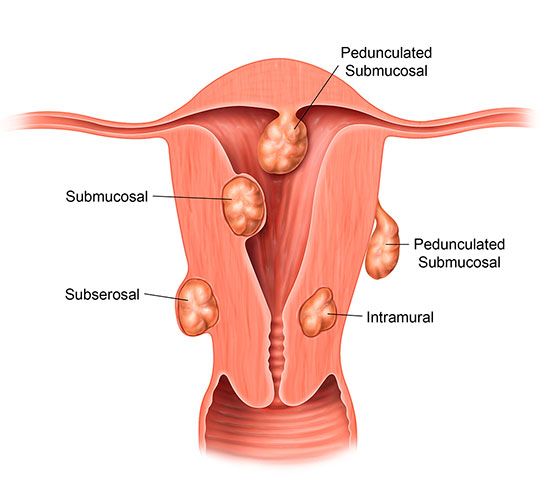
Fibroid growth is related to the following: (iii)
- Estrogen
- Progesterone
- Growth hormones
- Genetic changes
- Misplaced cells in the body present before birth
- The number of micronutrients — nutrients that the body needs only small amounts of — in your
- Major stressors
It’s thought that fibroids are caused by the combination of many of these factors.
Related: 10 Possible Causes of Uterine Fibroids
What Are the Symptoms of Uterine Fibroids?
Most women with uterine fibroids have no symptoms. However, fibroids can cause a number of symptoms depending on their size, location within the uterus, and how close they are to other organs in the pelvic region.
Abnormal bleeding is the most common symptom of a uterine fibroid. If the tumor is located within the uterine cavity or near the uterine lining, it may cause excessive menstrual bleeding. The uterine fibroid may also cause bleeding between periods.
Uterine fibroid symptoms can include: (iv, v)
- Heavy or prolonged menstrual periods
- Abnormal bleeding between menstrual periods
- Pelvic pain
- Frequent urination
- A firm mass, often located near the middle of the pelvis
- A feeling of fullness in the pelvic area (lower abdomen)
- Enlargement of the lower abdomen
- Pain during sex
- Lower back pain
- Complications during pregnancy and labor, including a six-time greater risk of cesarean section
- Reproductive problems, such as infertility (very rare)
What Are Some Complications Caused by Uterine Fibroids?
Sometimes uterine fibroids may cause more serious problems. Uterine fibroids can make menstrual bleeding heavy and full of clots. (ii) Heavy menstrual bleeding and fibroids that cause bleeding between periods can make a woman anemic. If you’re feeling fatigued, visit your doctor to have a blood test to measure your level of red blood cells.
Other complications may include:
- Infertility
- Blockage of the urinary tract or bowels
- Deteriorating fibroids, which can cause severe, localized pain
- Development of cancerous fibroids, which is rare and less than one in 1,000 (ii)
Treatment for Fibroids
The question of how aggressively to treat your fibroids depends on your symptoms and how they are interfering with your quality of life. For example, bleeding, unless it is causing anemia, is not harmful and is rarely an indication of a serious underlying problem.
You could do nothing — often called “watchful waiting” — and just have your gynecologist continue to monitor your health. If you’re not that far from menopause, you may choose to wait and see if the bleeding stops once you no longer get your period. The fibroids may shrink once the estrogen level in your body decreases.
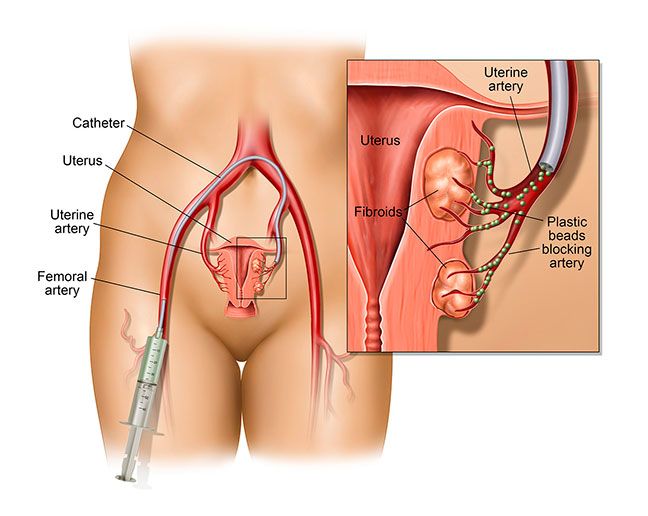
If you have bleeding due to fibroids, treatment will depend on many factors, including your age, the severity of the bleeding, and whether you want to have children. One treatment option, uterine fibroid embolization (UFE), is a minimally invasive and safe alternative to hysterectomy. This nonsurgical procedure effectively shrinks uterine fibroid tumors and offers relief from the unpleasant symptoms that come with them while sparing your uterus. It can be performed in an outpatient setting where you can go home the same day of your procedure for a quicker recovery, as compared to traditional surgery.
When considering the various uterine fibroid treatments, talk with your doctor to weigh the risks and benefits of each procedure.
Download our free information sheet, Understanding Uterine Fibroid Embolization, for more information or call 844-UFE-CARE (833-2273) to schedule an appointment with a vascular specialist.
Sources:
(i) Radiological Society of North America. (2016, March 17). Abnormal Vaginal Bleeding – Evaluation and Treatment. Retrieved July 23, 2018, from https://www.radiologyinfo.org/en/info.cfm?pg=vaginalbleeding
(ii) Richardson, M., MD. (2011, May). Ask the doctor: Heavy bleeding, fibroids, and polyps – Harvard Health. Retrieved June 17, 2018, from https://www.health.harvard.edu/newsletter_article/heavy-bleeding-fibroids-and-polyps
(iii) What causes uterine fibroids? (2016, December 1). Retrieved June 12, 2018, from https://www.nichd.nih.gov/health/topics/uterine/conditioninfo/causes
(iv) Office on Women’s Health. (2018, March 16). _Uterine fibroids. Retrieved June 18, 2018, from https://www.womenshealth.gov/a-z-topics/uterine-fibroids
(v) UCLA Health. (n.d.). _Fibroids. Retrieved June 18, 2018, from http://obgyn.ucla.edu/fibroids
